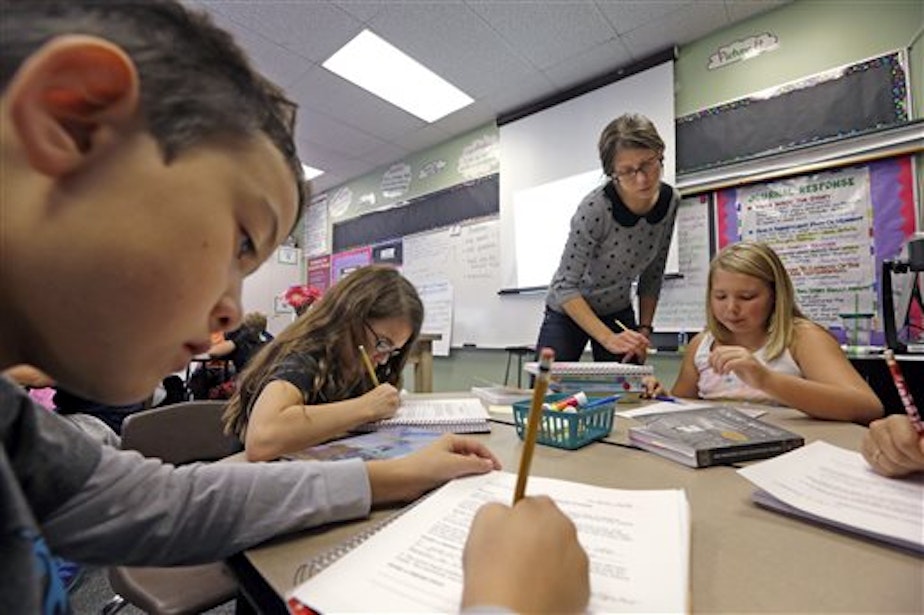Class Size Initiative Too Close To Call

UPDATE: 11/5/2014, 4:19 p.m.
At last count, Initiative 1351 continued to be closely split with 49.5 percent in favor, 50.5 percent against.
Original Post
A statewide initiative to reduce K-12 class sizes is too close to call in early returns: 50.6 to 49.4 percent, with the "yes" votes slightly trailing.
Initiative 1351 would decrease average class sizes for all grades, but especially for the youngest students.
Sponsored
Union data show Washington state has more students in the average public school classroom than nearly any other state.
If the measure passes, the average kindergarten through third grade class size would go from 25 to 17 students, or just 15 students per class in schools where most students are low-income.
Numerous studies have shown that reducing class sizes makes the biggest difference for students in the earlier grades. But some critics of the measure point out that studies have shown marginal academic improvements for older students when class sizes are reduced.
They say the initiative is way too expensive at nearly a billion dollars a year, and that many schools would have to come up with an impossible number of extra classrooms in order to meet the smaller class size mandate.
The measure was backed by Washington Education Association, the state's largest teachers union.

